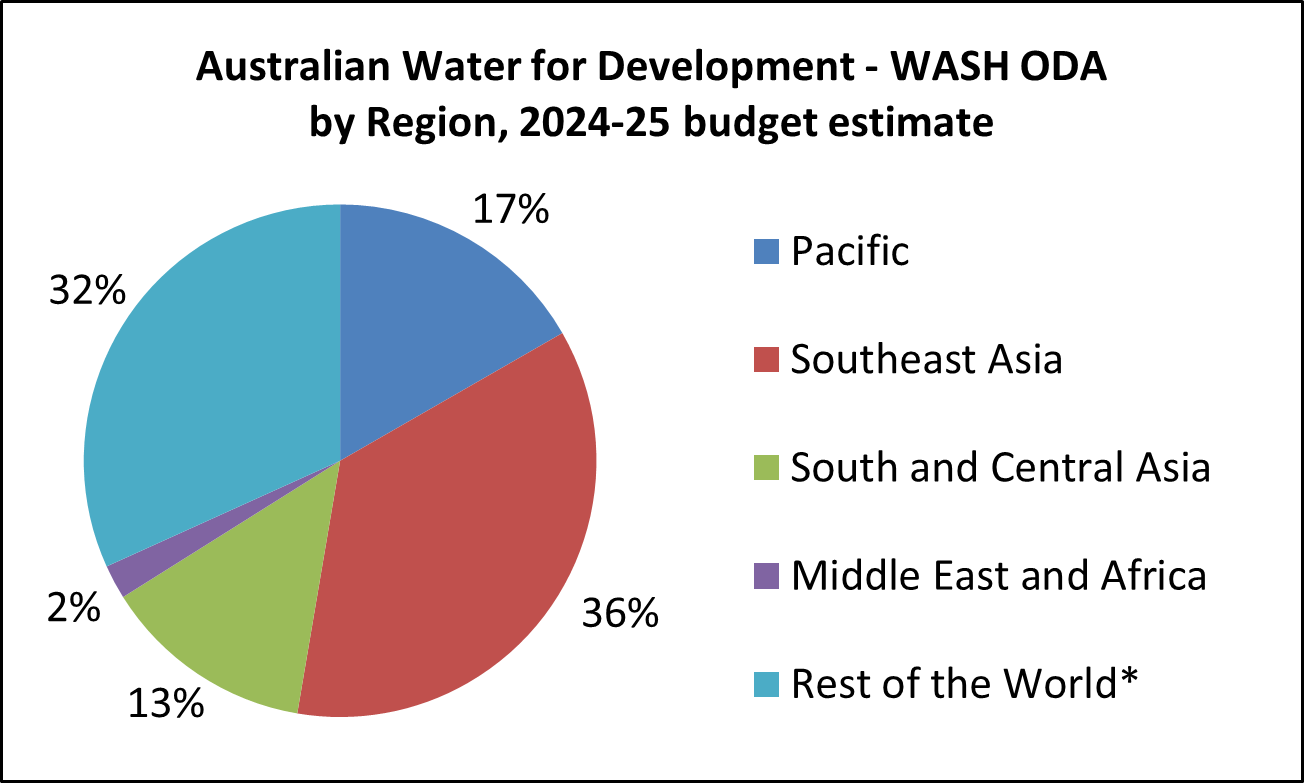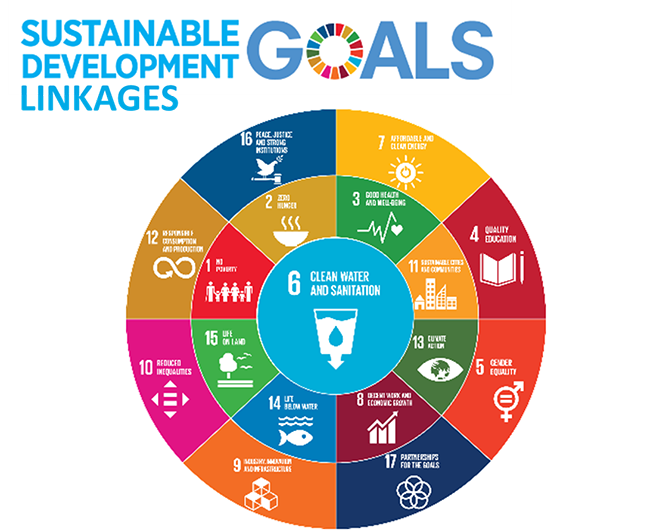Development cooperation fact sheets
May 2024
Download print version
| Australian ODA | 2022-23 Actual ($m) | 2023-24 Budget Estimate ($m) | 2024-25 Budget Estimate ($m) |
|---|---|---|---|
| Pacific | 30.5 | 45.0 | 16.9 |
| Southeast, East Asia and Other Asia | 46.1 | 55.4 | 36.4 |
| South and West Asia | 9.0 | 13.4 | 13.6 |
| Africa and the Middle East | 3.0 | 2.9 | 2.2 |
| Rest of the World* | 28.2 | 21.7 | 32.2 |
| Total Water for Development ODA | 116.8 | 138.4 | 101.3 |
*Includes ODA that is not attributed to particular countries or regions.
Australia’s investments improve management of scarce water resources, increase opportunities for economic growth, and improve access to inclusive, sustainable and safe drinking water, sanitation, and hygiene services.
Strategic direction
Australia sees water as a development, foreign policy, and security issue. Water underpins all human activity: food production, livelihoods, health, and social stability. Water is closely linked to food security with around 80 per cent of available freshwater consumed by agriculture. Globally, some two billion people still lack access to safely managed drinking water, undermining community health and resilience. Climate change is increasing strains on water security. It is estimated that by 2050 more than half of the world’s population, and around half of global grain production will be at risk due to water stress.
Our investments in the water sector are fundamental to how we respond to climate change. Investments are focused on the Indo-Pacific region covering climate-resilient water, sanitation, and hygiene (WASH), water resources management and water infrastructure.
Program highlights
- The Australian Water Partnership supports partners across the region to strengthen water resource management, including to improve water planning in Vietnam, groundwater management in India, and water utility capabilities in the Pacific.
- The Water for Women Fund improves access to climate-resilient WASH services with a strong focus on supporting women, girls and people with a disability in some of the poorest communities across the region. It is on track to reach 4 million people in 16 countries.
- The Mekong-Australia Partnership's Water, Energy, Climate program builds environmental resilience, through improved water resource management and supports regional water cooperation in five Mekong countries.
- KIAT, an infrastructure partnership between the Indonesian and Australian governments, has improved WASH services for hundreds of thousands of households through improved water and sanitation infrastructure.


